The Burrow

Driving can be an enjoyable, pleasant experience. Other times, it can be an incredibly frustrating nightmare that leaves you in complete bewilderment at the rude (and sometimes dangerous) actions other drivers can take.
Road rage, bad driving behaviour and ignoring road safety is a serious issue. As experts in car insurance, we wanted to get a better understanding of what people are experiencing on the roads, and how it can lead to serious accidents.
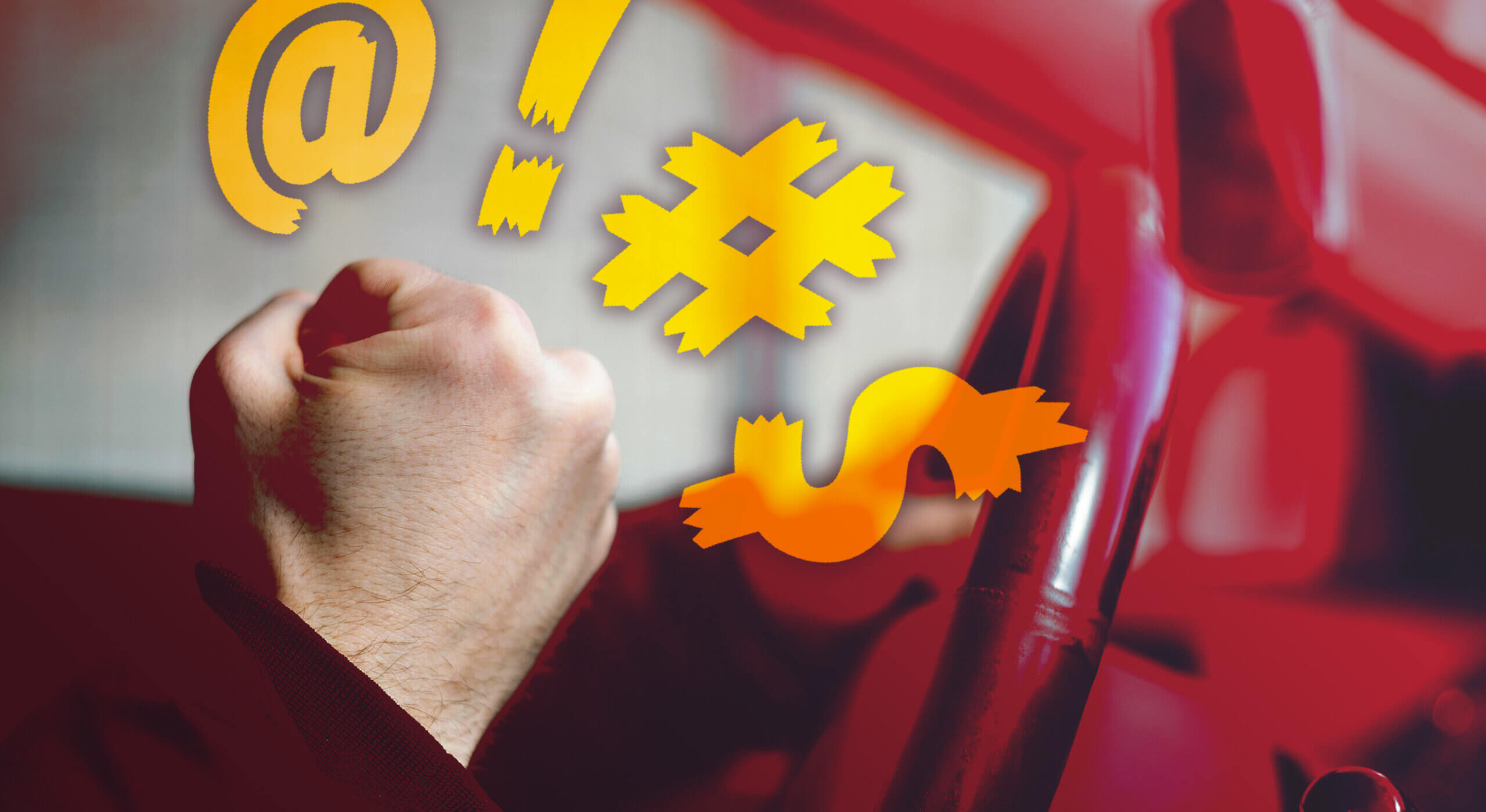
We surveyed more than 3,000 adults across Australia, Canada and the USA to find out what driver behaviours are the most frustrating and just how common road rage really is.
Buckle up as we take a spin through the numbers.
Road rage is perhaps more common than we would like it to be, with almost 60% of people in each country experiencing road rage in some way – either as a direct victim, witness, or perpetrator.
Around one-in-five people have been direct victims of road rage – 23.2% in Australia, 20.7% in Canada and 18.5% in the US. Interestingly, Americans were the most likely to say they had been a perpetrator themselves at 16.9%, while Australians were the least likely at 13.1%.
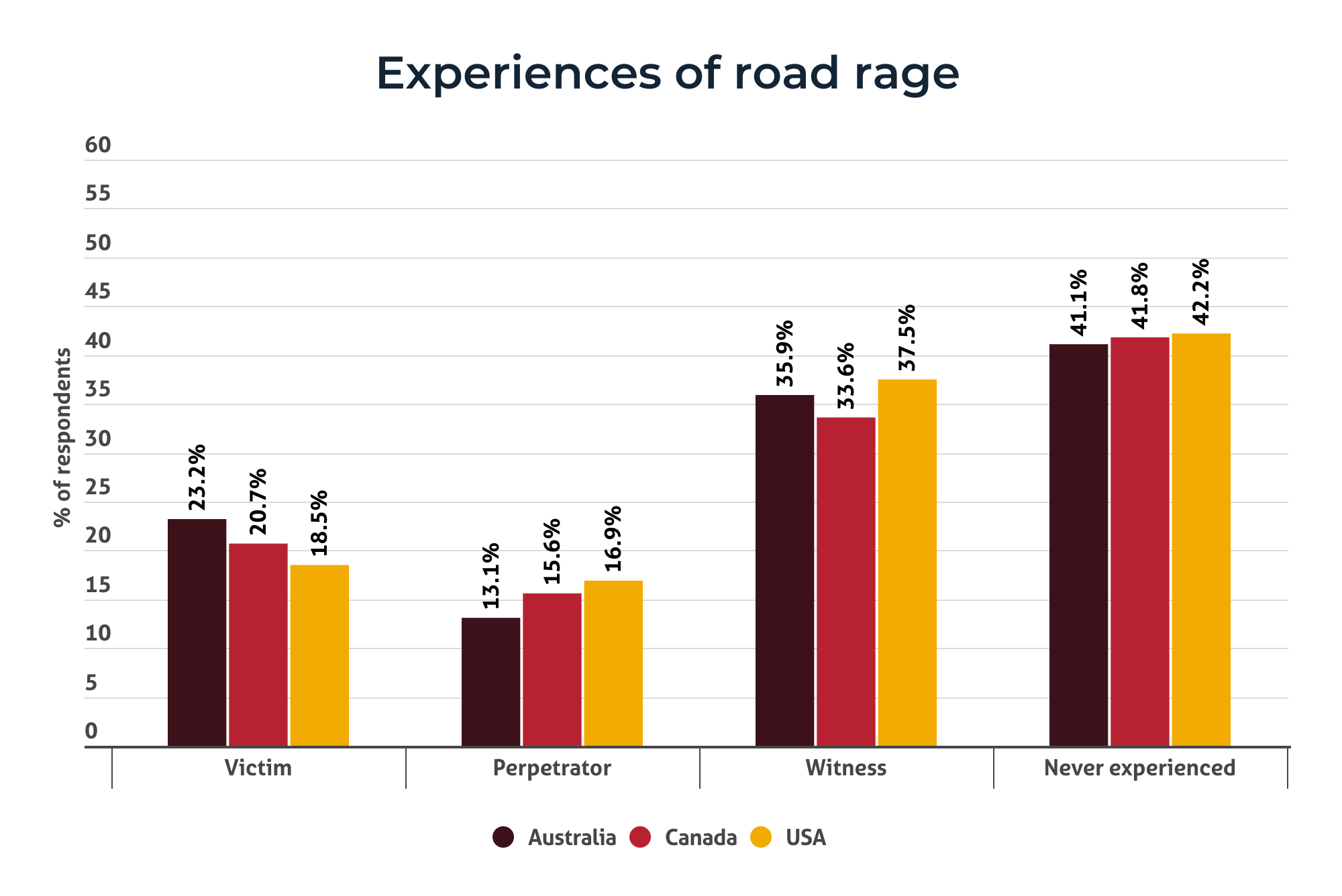
There was an interesting trend in the data where older road users were more likely to have never experienced road rage compared to younger drivers, despite having more years and life experience on the road. This was true for each country.
For example, only 30.0% of Australians, 20.9% of Canadians and 19.2% of Gen Z (18-25 year olds) had avoided road rage, but as the chart below shows, older people were more likely to have avoided road rage altogether.
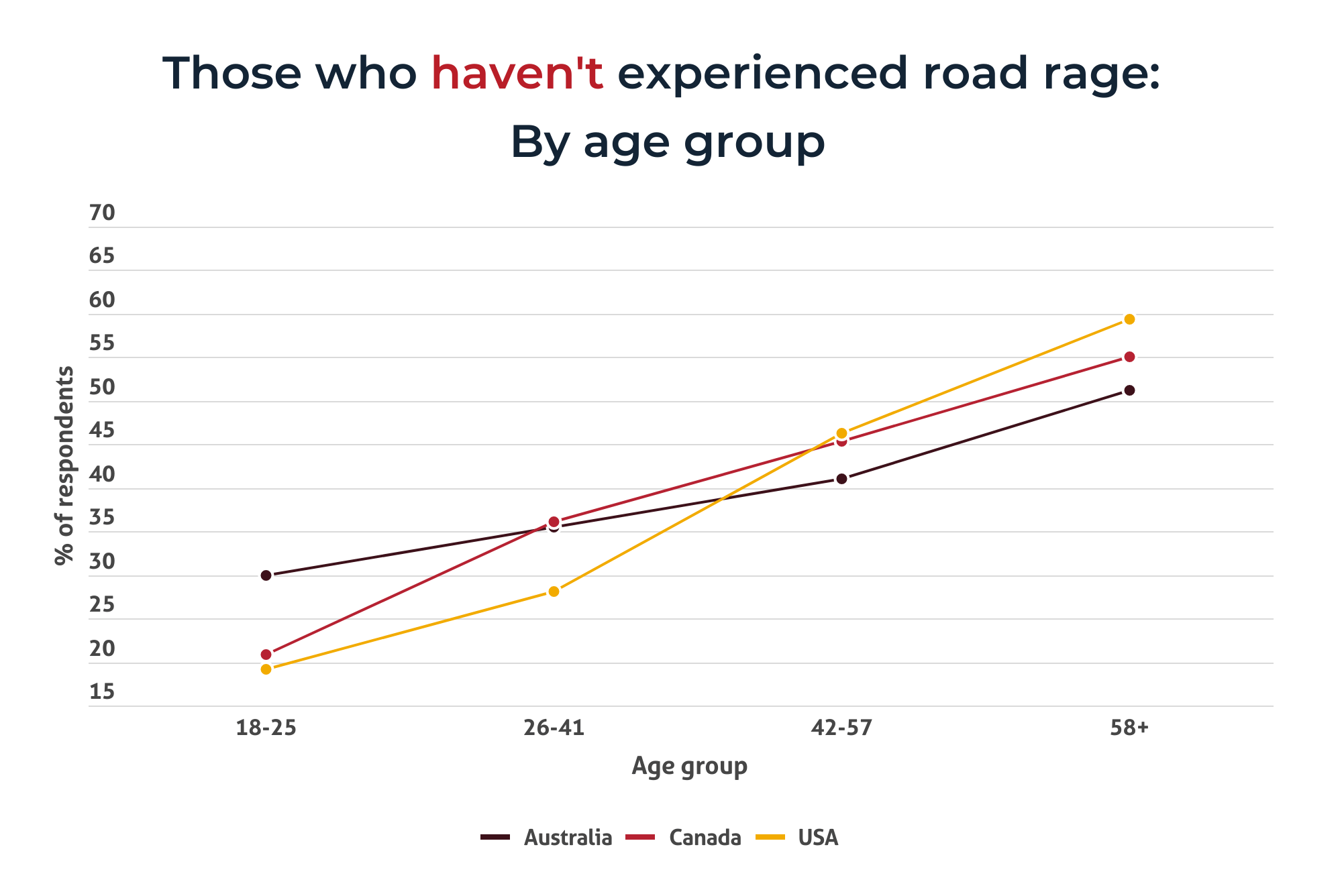
A joint study by Budget Direct and Monash University reported across 2021 and 2023 that the number of victims threatened or physically harmed in road rage incidents had doubled in two years.1 Monash University’s Dr Susan Carland noted in the university’s own podcast What Happens Next? that there has been an increase in incivility in the past few years, which has only gotten worse since the COVID-19 pandemic.2
This increase in aggression is not without consequences. In the USA, there has been an increase in road rage shootings from 2016 to 2021. From 2016 to 2019 there was an average of 22 people shot in road rage incidents every month. In 2020 it rose to 34 per month, and in 2021 it rose to 44 per month.3
There are a range of different actions and behaviours that constitute road rage, but some are more frustrating than others. The most frustrating behaviour for Australians and Americans is tailgating (64.6% and 63.5% respectively), while in Canada it was getting cut off in traffic (60.5%).
For Australians, other frustrating behaviours included incorrect indicating, people using their phone while driving, getting cut off and speeding. Meanwhile in Canada, other top causes of frustration were phone use from other drivers, tailgating, incorrect indicating and running a red light/stop sign.
After tailgating, Americans listed getting cut off, seeing other drivers on their phones, then running red lights and stop signs as the most frustrating behaviours they see on the roads.
What behaviours frustrate you the most? | Australia | Canada | USA |
Tailgating | 64.6% | 55.7% | 63.5% |
Seeing someone on their phone while driving | 53.1% | 56.3% | 56.3% |
Indicating incorrectly, or not at all | 53.1% | 47.6% | 43.7% |
Getting cut off in traffic | 51.5% | 60.5% | 62.5% |
Speeding | 51.2% | 43.6% | 45.4% |
Merging into a lane when there is not sufficient space | 49.6% | 45.4% | 50.3% |
Running red lights/stop signs | 48.0% | 46.0% | 53.9% |
Constantly changing lanes | 47.8% | 45.7% | 46.2% |
Slow drivers | 42.7% | 42.5% | 45.1% |
Unnecessary high beam use | 38.7% | 41.3% | 48.0% |
Bad parking | 36.2% | 35.1% | 34.9% |
When we experience road rage, it can be really hard to maintain our composure and not react in turn. Just over half of Australians, and less than half of Canadians and Americans surveyed, said they didn’t react when experiencing road rage (56.0% for Australia, 49.2% for Canada, and 46.7% for the USA).
For those who did react negatively, the most common reaction to road rage was swearing at the other road user, followed by making rude hand gestures – this was the case for all three countries.
Other reactions to road rage could be argued as road rage behaviours themselves, including cutting off and blocking other drivers, flashing high beams, honking the horn excessively or tailgating.
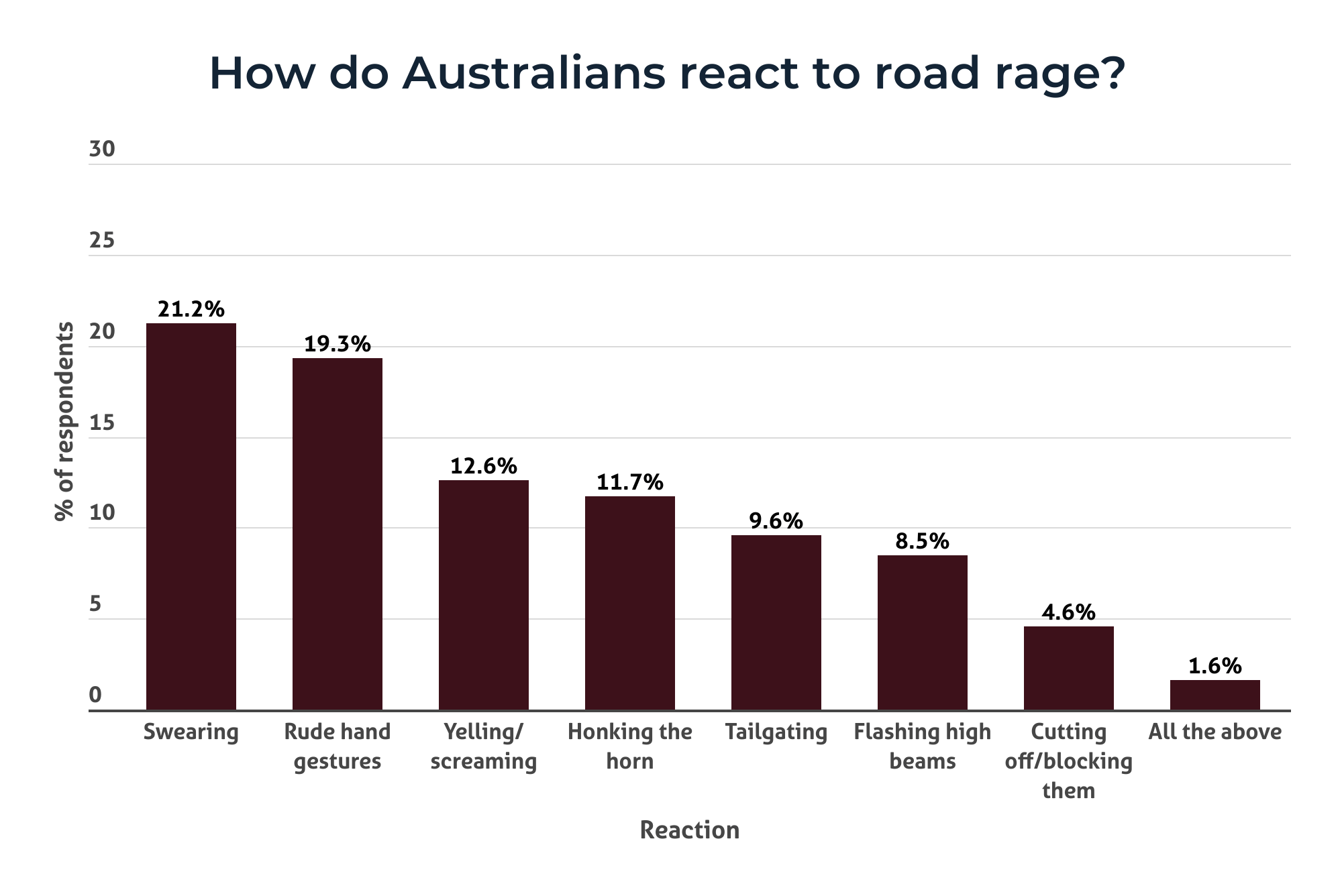
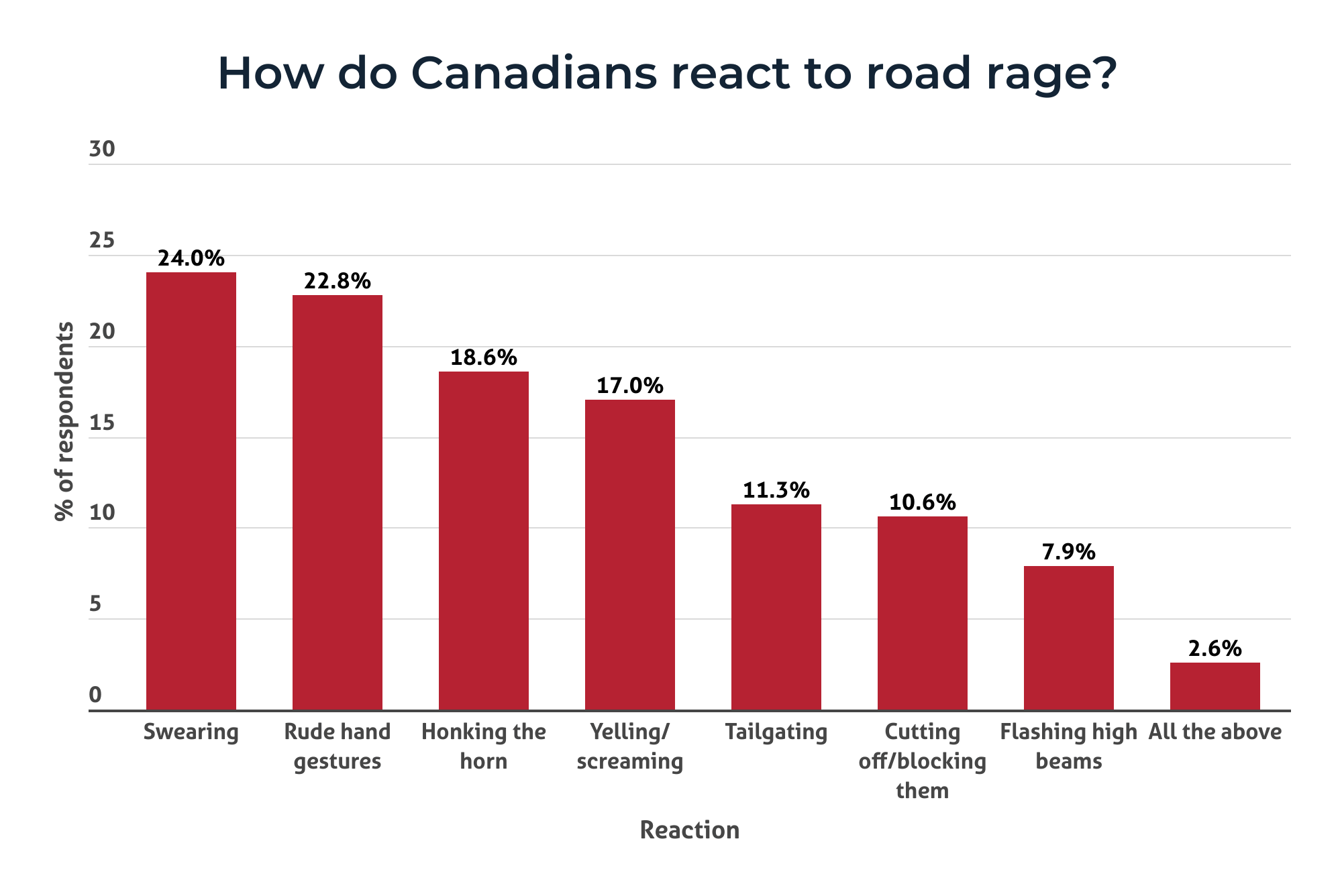
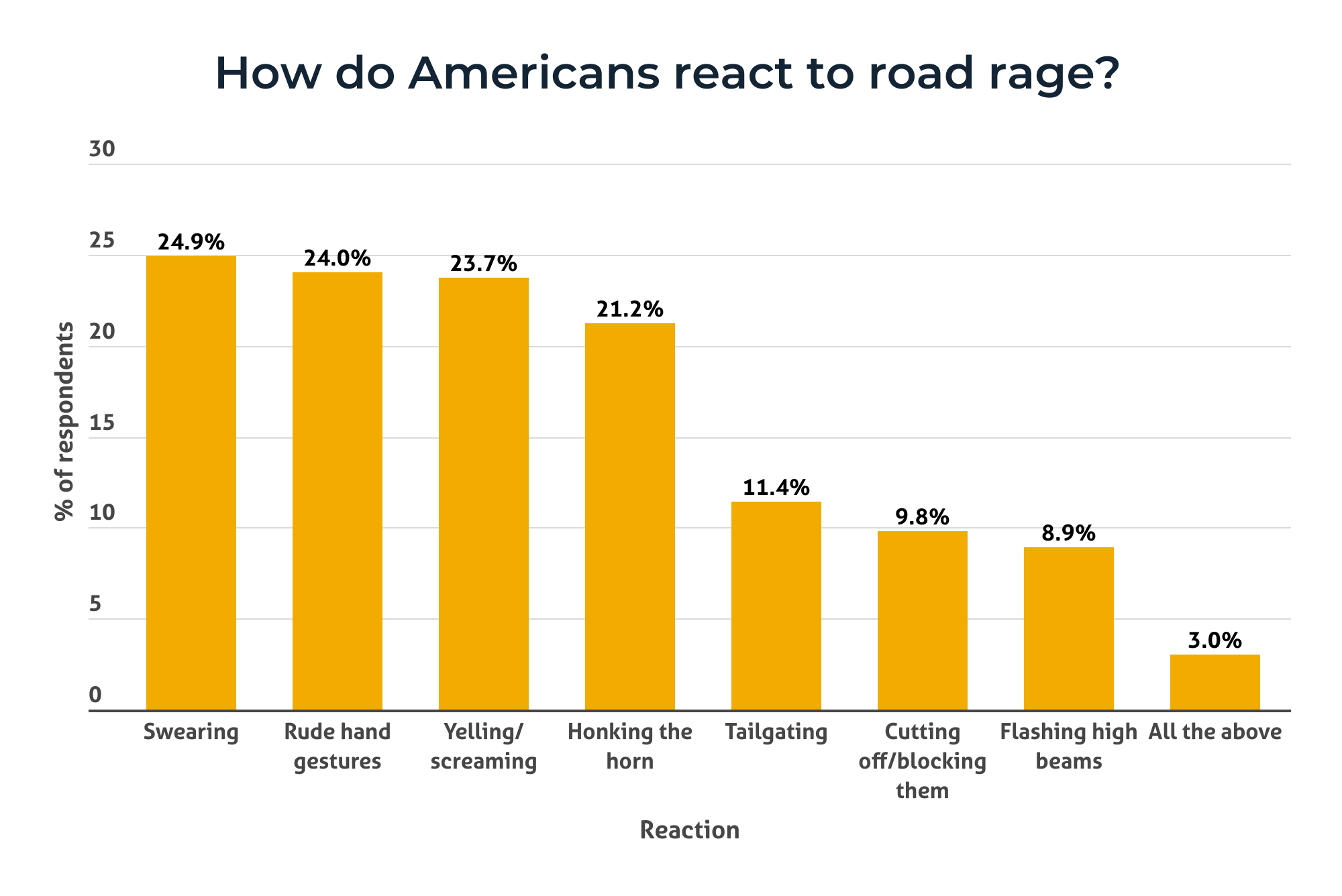
Most people would think of themselves as good or safe drivers, but perhaps we aren’t as good as we say we are. When asked whether they regularly engaged in any dangerous behaviours, 36.4% of Canadians and 39.3% of Americans admitted to at least one dangerous behaviour from the list we provided.
Australians were less likely to say they did any of them, with only 27.3% of respondents admitting to regularly doing something dangerous. Of those who did engage in these behaviours, the results are listed in the table below.
A couple of standouts were that Americans were twice as likely as Australians to use a mobile phone while driving (13.0% vs 5.5%) and to quickly swerve between lanes (7.3% vs 3.5%)
Self-admitted dangerous driving behaviours | Australia | Canada | USA |
Do not always give way to other road users trying to merge | 12.6% | 14.5% | 13.6% |
Stick to ‘fast’ lanes, even when not overtaking another vehicle | 8.3% | 11.1% | 12.7% |
Do not always indicate correctly | 8.3% | 11.2% | 11.4% |
Do not to slow down in the rain to avoid splashing pedestrians | 5.7% | 8.4% | 6.3% |
Do not give a wide berth when passing cyclists | 5.6% | 5.4% | 6.0% |
Use a mobile phone while driving | 5.5% | 8.5% | 13.0% |
Quickly swerve between lanes | 3.5% | 5.1% | 7.3% |
It’s considered courteous to give a friendly wave to other drivers and road users when they let you pass, such as at an intersection, when merging or on a narrow road. Most people seem to agree, as 78.5% of Australians, 76.1% of Canadians and 73.0% of Americans say they always wave ‘thank you’.
Furthermore, when asked how they felt when other road users gave a friendly wave, most people appreciate it (83.5% of Australians, 87.6% of Canadians and 90.6% of Americans).
However, when we break down the responses to these two questions, we get some interesting findings. Men were much more likely than women to say they ‘sometimes’ wave – women were more likely to say they either always wave or never wave in comparison to men.
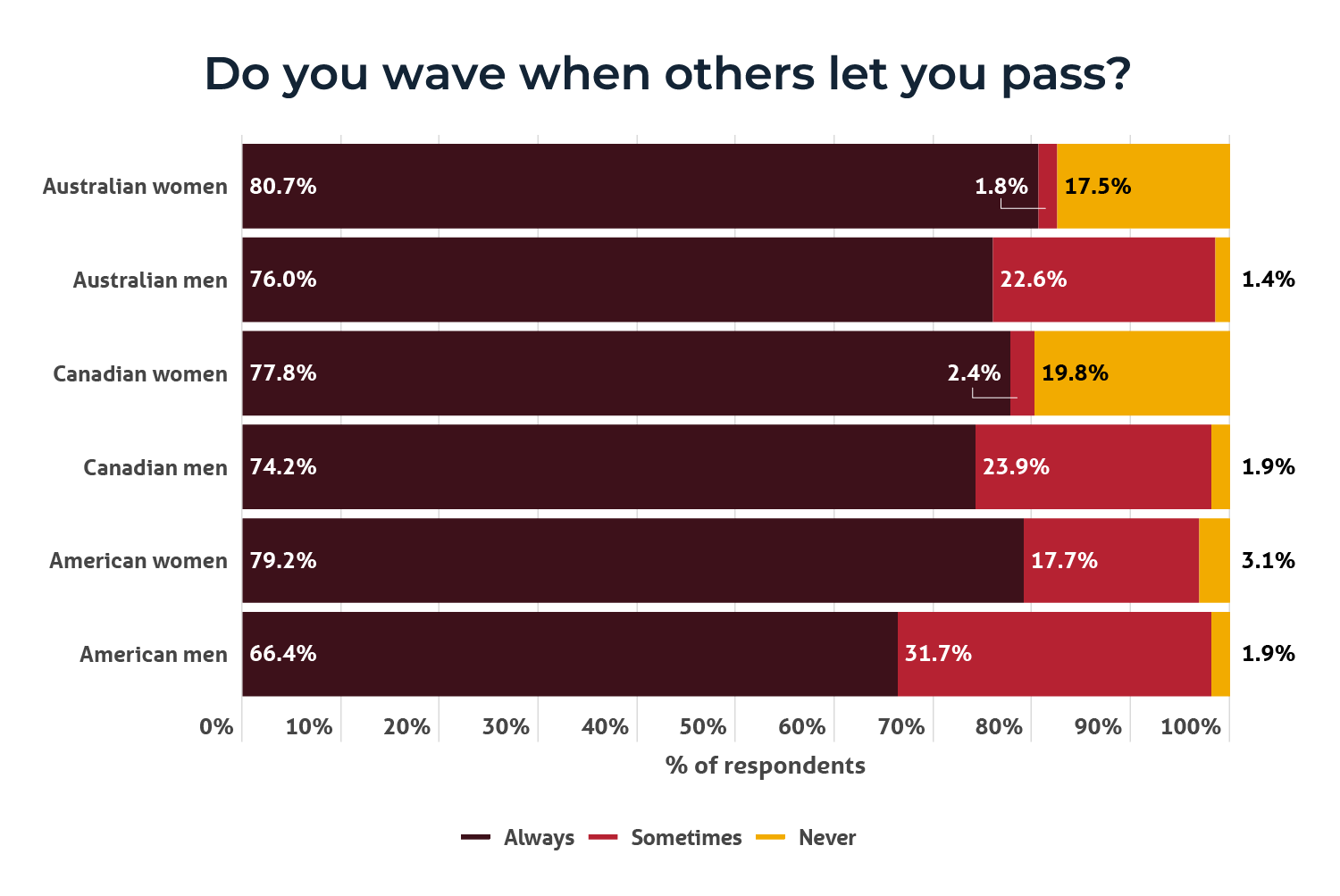
Another interesting trend was that Gen Z and Millennials were more likely to say they don’t care if other road users give a thank you wave or not. This response consistently dropped the older the respondents got. This implies that older generations care more – and thus would be more upset than younger drivers if they didn’t receive a thank you wave after letting someone pass.
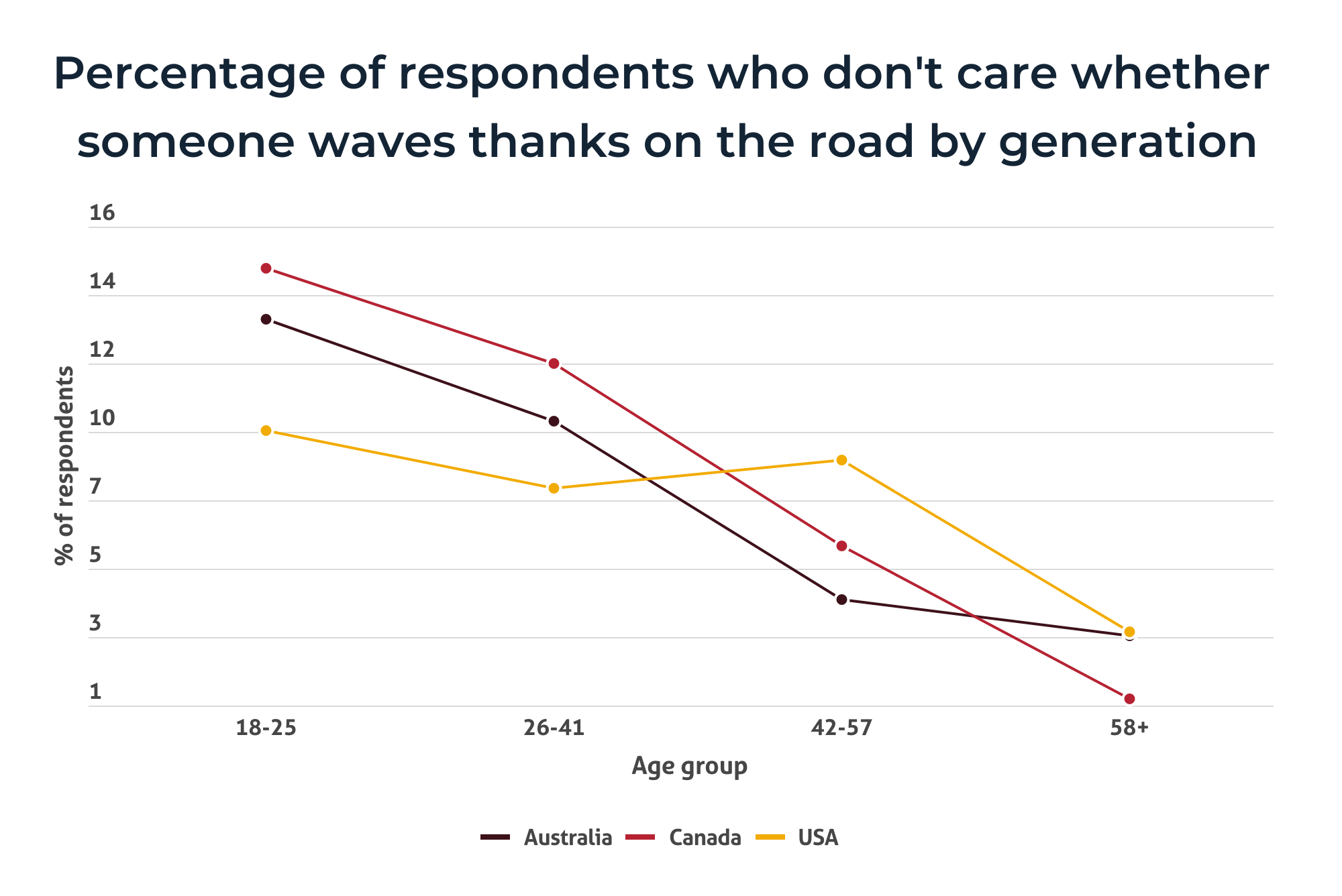
Road rage behaviours can not only upset others, but it can also put people at serious risk of harm. Being irresponsible on the roads by driving angrily or dangerously can not only endanger lives and get you into trouble with local law enforcement, but it can also impact your car insurance.
Compare the Market’s Executive General Manager of General Insurance, Adrian Taylor explains that reckless and dangerous drivers could see themselves paying more for car insurance, or risk losing it altogether.
“Car insurance companies use all the data they can to assess risk. If you have a bad driving record, this could see your car insurance premiums increase. When your policy renews, an insurer may even decline to offer you cover,” Taylor says.
“Additionally, if you were doing something illegal or dangerous at the time of an incident because you were engaged in road rage, you could be completely liable but your claim could be declined. This means you would have to pay all damages and costs yourself, out of your own pocket.”
Compare the Market commissioned PureProfile to survey 1,003 Australian, 1,005 Canadian and 1,004 American adults in November 2023. Where results were broken down and displayed by gender. Respondents who identified as non-binary were not included in this section, but were included in all other data.
